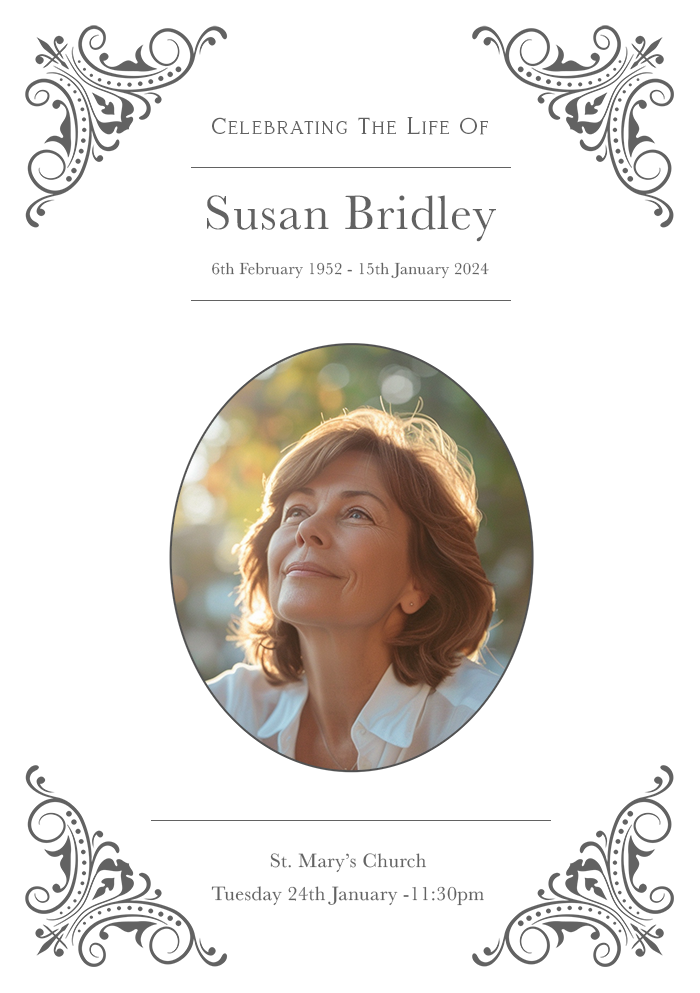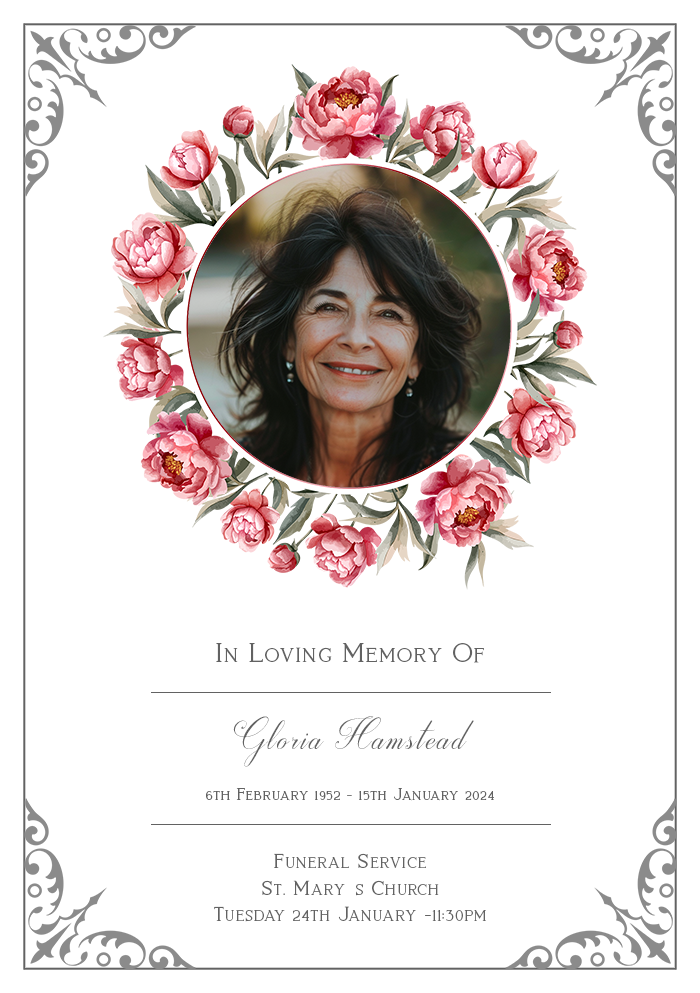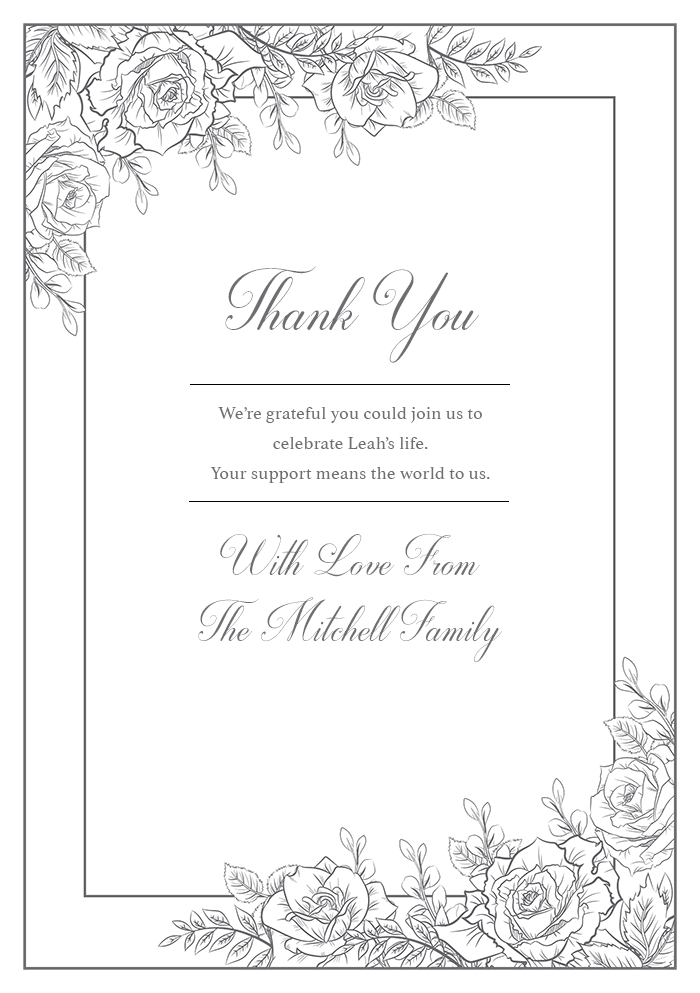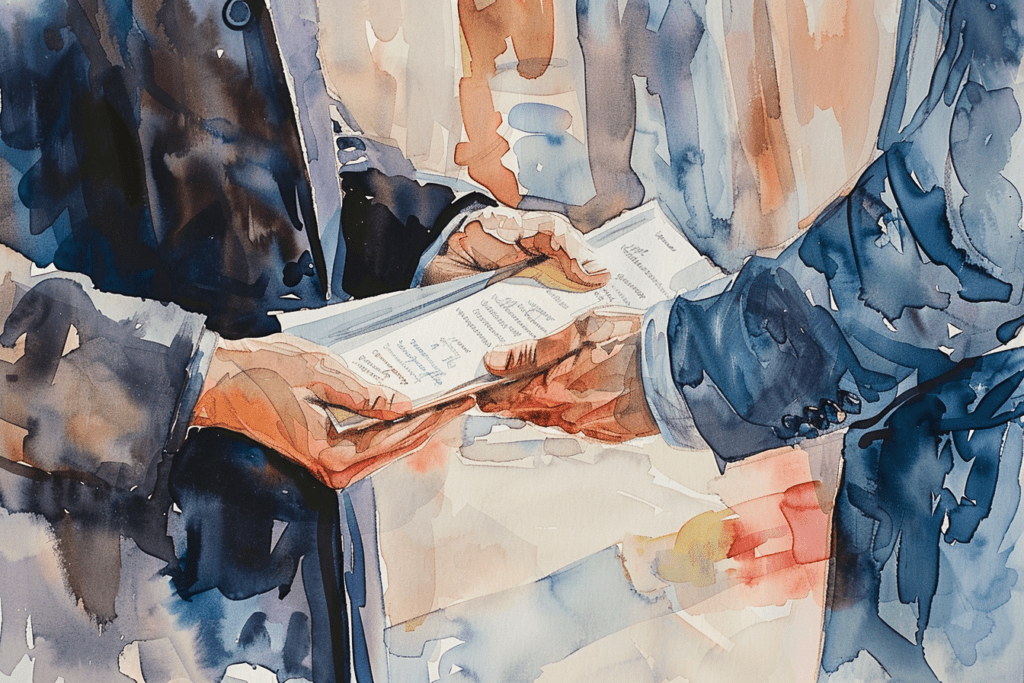
Comprehensive Guide to Funeral Stationery



Introduction

Losing a loved one is one of the most challenging experiences anyone can face. During this difficult time, planning a funeral involves numerous details, including creating and organising various types of funeral stationery.
These items play a crucial role in commemorating the deceased and helping mourners participate in the ceremony. Understanding the terminology related to funeral stationery can simplify this process and ensure you can honour your loved one appropriately.
This guide will walk you through the key terms and their meanings, helping you navigate this emotional journey with a bit more ease.
Article Contents

Order of Service

What is an Order of Service?
An Order of Service is a booklet distributed at the funeral service, detailing the sequence of events. It typically includes hymns, readings, eulogies, and other elements of the ceremony.
This booklet not only guides attendees through the service but also serves as a keepsake for many.
Key Components of an Order of Service
- Cover Page: This usually includes the name of the deceased, dates of birth and death, and often a photograph.
- Introduction: A brief welcome or introduction, sometimes including a quote or short prayer.
- Hymns and Readings: Lyrics or texts of hymns and readings to be shared during the service.
- Eulogy: Details about who will deliver the eulogy and any special notes about the deceased.
- Closing Remarks: Information on the committal or final prayers and any subsequent gatherings.
For a more in-depth look into order of service booklets please see our article – What Is A Funeral Order Of Service & What Should You Include.
Designing an Order of Service
When designing an Order of Service, consider the tone and style that best reflect the personality and life of the deceased. Incorporate meaningful images, quotes, and colours to personalise the booklet.



Announcement Card

Purpose of an Announcement Card
An Announcement Card is used to inform friends and family about the passing of a loved one and provide details of the funeral service. These cards can be sent out individually or included in newspapers.
Essential Information to Include
- Deceased’s Information: Full name, date of birth, and date of death.
- Funeral Details: Date, time, and location of the funeral service.
- Personal Message: A brief message from the family, possibly including a favourite quote or scripture.
- Contact Information: Details for contacting the family for further information or condolences.
Crafting a Thoughtful Announcement Card
When creating an announcement card, use respectful and concise language. Opt for a simple yet elegant design that honours the memory of the deceased while providing essential information clearly.
For a more in-depth look into funeral announcement cards please see our article – What To Include In A Funeral Announcement Card.



Attendance Card

What is an Attendance Card?
An Attendance Card is provided at the funeral service for guests to sign, helping the family keep a record of who attended. This can be especially meaningful when sending thank you cards later.
How to Use an Attendance Card
- Placement: Position the cards at the entrance of the venue with pens available.
- Information to Collect: Names, addresses, and any personal messages guests wish to leave.
- Design Tips: Ensure the cards are easy to fill out and include enough space for writing.
For a more in-depth look into funeral attendance cards please see our article – The Importance of Funeral Attendance Cards: What You Need to Know.

Share a Memory Card

Purpose of a Share a Memory Card
A Share a Memory Card invites guests to write down their favourite memories of the deceased. These cards can be collected and cherished by the family as a lasting tribute.
How to Incorporate Memory Cards
- Distribution: Place cards on seats before the service or distribute them during the event.
- Collection: Provide a designated area or box for guests to submit their completed cards.
- Design Elements: Use a design that complements the overall theme of the funeral service, offering enough space for guests to write.
For a more in-depth look into share a memory cards please see our article – Designing A Funeral Share a Memory Card: Ideas and Inspiration.

Thank You Card

Role of a Thank You Card
Thank You Cards are sent by the family after the funeral to express gratitude to those who attended, sent condolences, or provided support during their time of loss.
Components of a Thank You Card
- Personal Message: A heartfelt note expressing appreciation for the support and kindness received.
- Specific Acknowledgements: Mention specific gestures or contributions, if possible.
- Signature: Signed by the family members.
Crafting a Meaningful Thank You Card
Keep the message sincere and brief, reflecting genuine gratitude. Choose a design that aligns with the tone of the other funeral stationery items.
For a more in-depth look into funeral thank you cards please see our article – What to Include in a Funeral Thank You Card: Etiquette and Examples.



Donation Card

Purpose of a Donation Card
A Donation Card encourages guests to make charitable donations in memory of the deceased, often in lieu of flowers. This can be a meaningful way to honour their legacy and support a cause they cared about.
Information to Include
- Charity Details: Name and information of the chosen charity or charities.
- How to Donate: Instructions on how to make a donation, including online options and contact details.
- Personal Message: A brief note explaining why the charity was chosen and how donations will be used.
Creating an Effective Donation Card
Ensure the instructions are clear and easy to follow. Include a brief explanation of why the chosen charity was important to the deceased, adding a personal touch.

Prayer Cards

Function of Prayer Cards
Prayer Cards are small, pocket-sized cards that often feature a religious image on one side and a prayer, scripture, or verse on the other. These cards can be handed out at the funeral service as a memento.
Key Elements of a Prayer Card
- Image: A religious or serene image that resonates with the faith or beliefs of the deceased.
- Text: A prayer, verse, or personal message.
- Personalisation: The name of the deceased and dates of birth and death.
Designing a Reverent Prayer Card
Select an image and text that hold significance for the deceased and their family. The card should be durable and small enough to be kept in a wallet or purse.

Memorial Book

What is a Memorial Book?
A Memorial Book is a larger, often more elaborate, version of a Share a Memory Card. It provides space for guests to write extended messages, memories, and condolences.
Using a Memorial Book
- Placement: Place the book at the entrance or a prominent location at the service.
- Encouraging Participation: Invite guests to share their memories and thoughts.
- Design Considerations: Choose a sturdy book with high-quality pages to ensure it lasts over time.
Enhancing a Memorial Book
Consider adding photos, quotes, or other elements that reflect the deceased’s life, making the book a comprehensive tribute.

Conclusion

Navigating the creation and distribution of funeral stationery can be a delicate task, but understanding the terminology and purposes of each item can make the process smoother.
These items not only help to organise and conduct the service but also provide lasting memories and tokens of comfort for those who are grieving.
By thoughtfully choosing and designing these pieces, you can honour your loved one’s memory and offer solace to those who mourn their passing.







